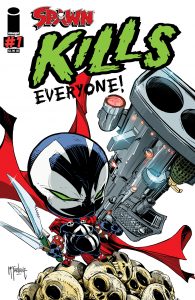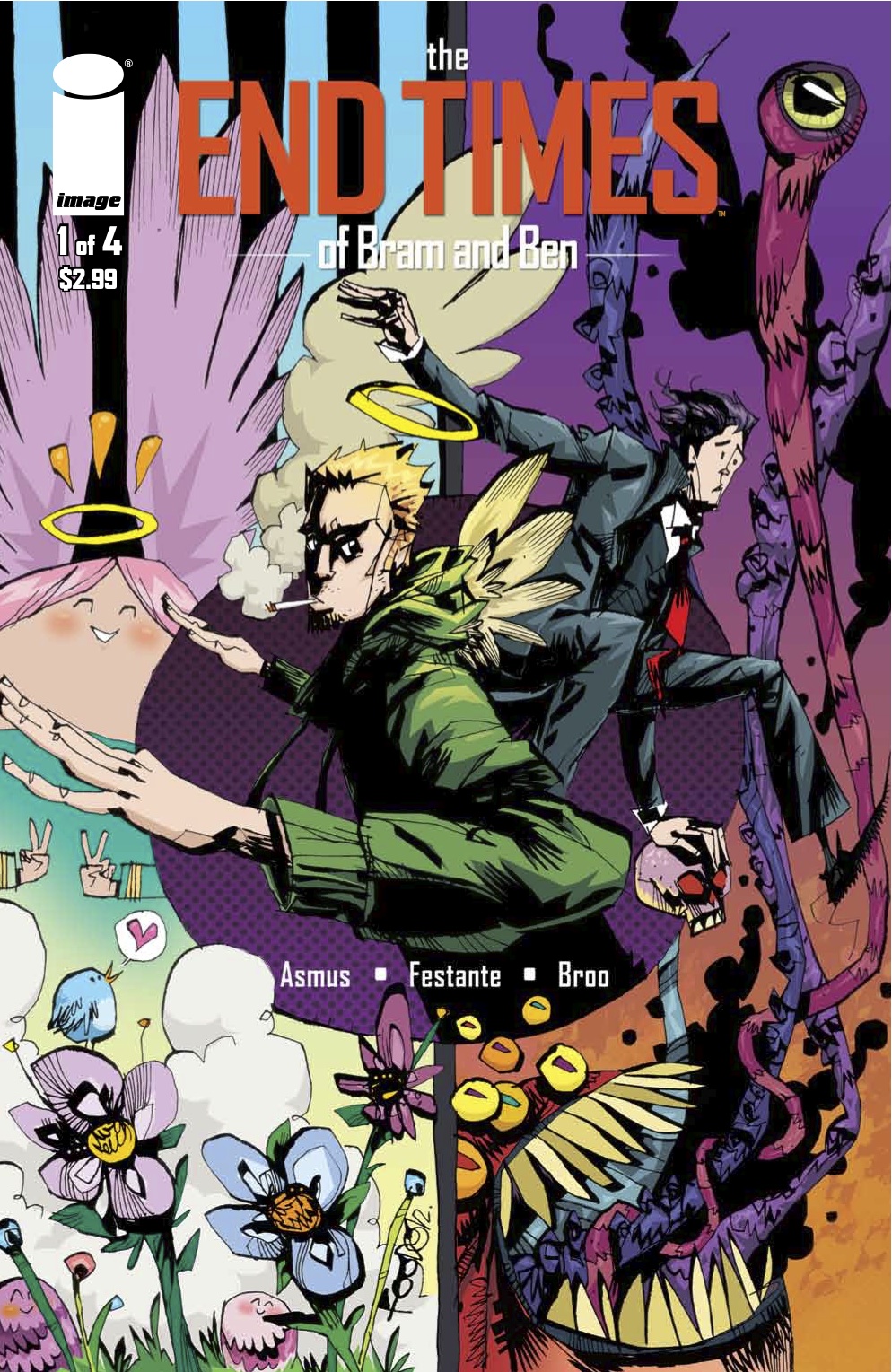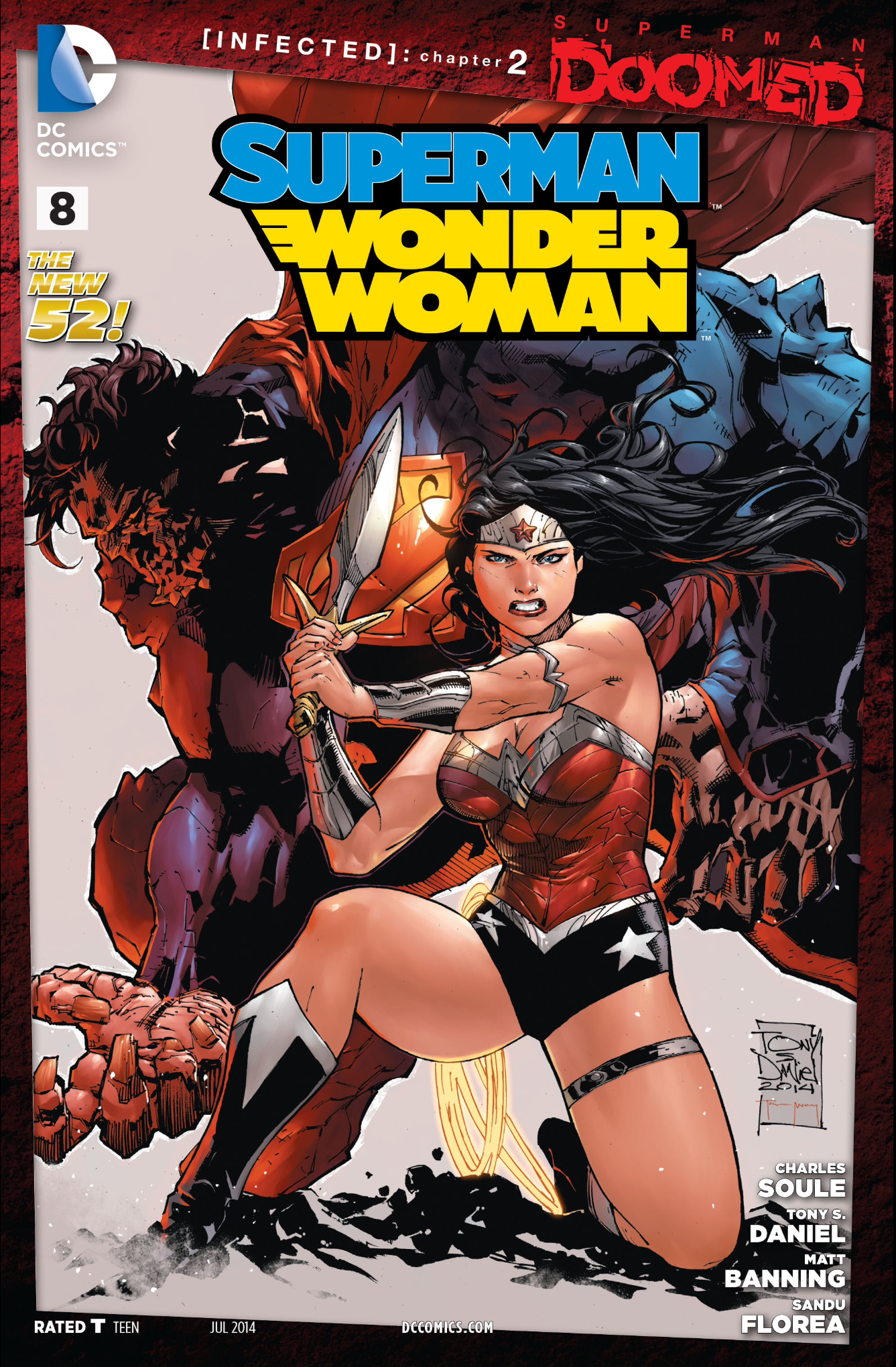Spawn Kills Everyone Review (One-Shot)
Written by Todd McFarlane
Art by JJ Kirby
Color by FCO Plascenscia
Lettering by Tom Orzechowski
Review by Max Mallet
“If they’d listened I wouldn’t have to be doing any of this!”

Spawn is not how you remember him. The image in your mind is likely of a gruff, muscle-bound mountain of a man. Todd McFarlane re-educates us: he’s a pot-bellied, megalomaniacal sprite whose feet don’t touch the ground when he uses the toilet. The 1990s anti-hero is leaving a trail of dead in his wake as he journeys to and through San Diego Comic-Con to remind us all of how awesome he is. It’s a shame that this story didn’t do the same.
McFarlane has been at this game a long time, and has produced stellar work on several superheroes – but Spawn is his brainchild. This one-shot is certainly lighter in tone (despite the title) than previous runs on the character. It’s evident that McFarlane is utilizing Harley Quinn and Deadpool tones of mindless violence at the hands of gleeful and lovable anti-heroes. The problem is that for those of us who have read those titles during this decade, this feels ham-fisted. Harley doesn’t have to tell us that she has a big heart and knows how to swing her mallet – the creators show us. The same goes for Deadpool – he doesn’t have to outright tell us that he’s hilarious and wields katanas with the same ease that chefs wield knives. There’s simply too much telling and not enough showing. Spawn is a narcissist throughout the story, but the readership is never shown why this is the case, nor given a payoff.
This one-shot lives and dies on its humor. While the humor starts strong with Spawn criticizing his literary creator and the business of super-hero stories, it fades into try-hard territory as the tale progresses. The funny moments usually pertain to Spawn killing off cosplayers at the convention, but some of the laughs are as forced as Spawn’s potbelly is into his costume. It’s unclear if this is a conscious choice or coincidence, but Spawn only directs his ire towards cosplayers dressed as Disney-owned properties. If this issue wasn’t based on a recycled premise, Spawn’s interactions with a noteworthy political candidate and with McFarlane himself would feel fresher, albeit no less crass. McFarlane also served as the book’s editor, which helps explain how these latter plot points avoided the editing room floor.
The art, like the story, is exaggerated and mostly whimsical. It’s also the best part of the issue, making a story about death and destruction seem more innocent than the title suggests. Kirby helps Spawn convey emotion with just his eyes, and is effective in doing so. When the jokes do hit their mark in the story, it’s often because the accompanying art sells the joke as much as the dialogue. A couple of action panels are oversaturated with onomatopoeias, selling the cartoonish nature of the issue but also reminding readership how hard the story is trying to be funny.
Verdict
Skip. I really, really wanted to like Spawn Kills Everyone. It offers promise, especially in the earlier pages. As the story goes on, it quickly ages, and not gracefully. There’s nothing wrong with the fresh take on Spawn or his new aesthetic. The writing is simply too on-the-nose with how hard it’s trying to make you laugh and which character runs the story is emulating. The conclusion is also wholly unsatisfying. It’s easier to forgive a story that starts weak and ends strong compared to the other way around, and that’s why it’s hard to recommend you spend $2.99 on this issue, even as a one-shot.











